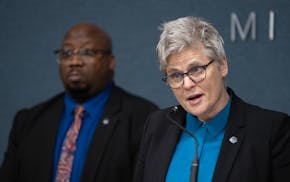It was a YouTube moment capable of converting backyard barbecue enthusiasts into vegetarians: "Downer cows" -- those too sick or injured to move -- being shocked, sprayed with high-pressure hoses and forklifted to get them on their feet to be slaughtered at the Westland/Hallmark Meat Co. in Chino, Calif. The undercover video, taken by a Humane Society member who got a job with the meat company, created a media maelstrom and resulted in the biggest beef recall ever, criminal charges against some of the workers and the shutdown of the plant.
So it was welcome news last week when U.S. Agriculture Secretary Ed Schafer announced a plan to end exceptions to downer-cow rules. The new regulations would ban all non-ambulatory cattle from the food chain and eliminate the loophole that allowed some cows to be slaughtered if inspected by a government veterinarian. Passing the vet test meant a cow was safe enough for the food supply, which in turn created the economic incentive to get the downer cow to slaughter.
The USDA estimates that last year only 1,000 cows out of 34 million were granted an exception. So the boost to the bottom line in this multibillion-dollar industry was negligible. But if meat from any of those animals had made anyone sick, the cost in lost domestic or export markets could have been staggering.
The beef industry doesn't just sell appetite appeal ("Beef: It's What's for Dinner!") but also the safety, quality and assumption that although processing meat may not be pleasant, it is at least humane. To risk an industry, which in Minnesota alone accounts for a billion dollars, or 10.8 percent of direct cash receipts, for such little upside was foolish.
To his credit, Schafer, who saw the video the day after he was sworn in, moved to close the loophole at lightning speed by Washington standards. And, to its credit, the beef industry, concerned about public perception and the need to move from consumer confusion to consumer confidence, seems eager to embrace the change. But the industry should go further and stop the practice immediately rather than waiting until the new USDA rules go into effect following a comment period. Most alarming is that the safeguards the USDA and the industry tout didn't stop the abuse. The California plant was chosen at random, as opposed to being a target of suspicion, which leaves open the question of how widespread the abuse is. It should not have taken a grainy video to shake up Washington.
Lessons can be learned, however, by the beef industry and others involved in agribusiness: Government and industry regulations are not a burden, but often a blessing, for animals and consumers. And they are also there to protect an industry, sometimes from itself.

BWCA's future likely hinges on election
Saving the dinosaurs: Why there's a future for community newspapers
Readers Write: Gun storage laws, Uber and Lyft, 24/7 businesses, the pipe organ


